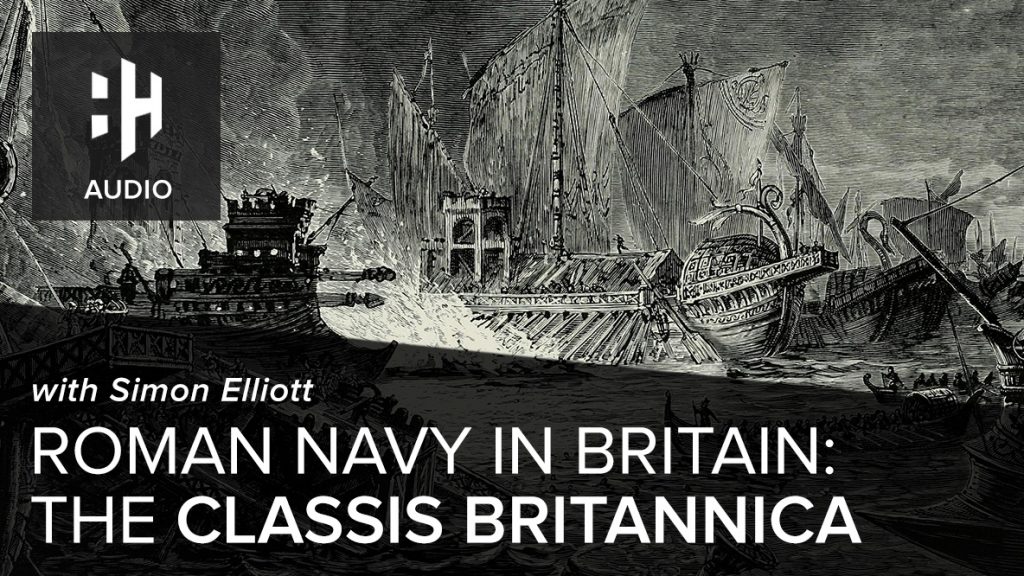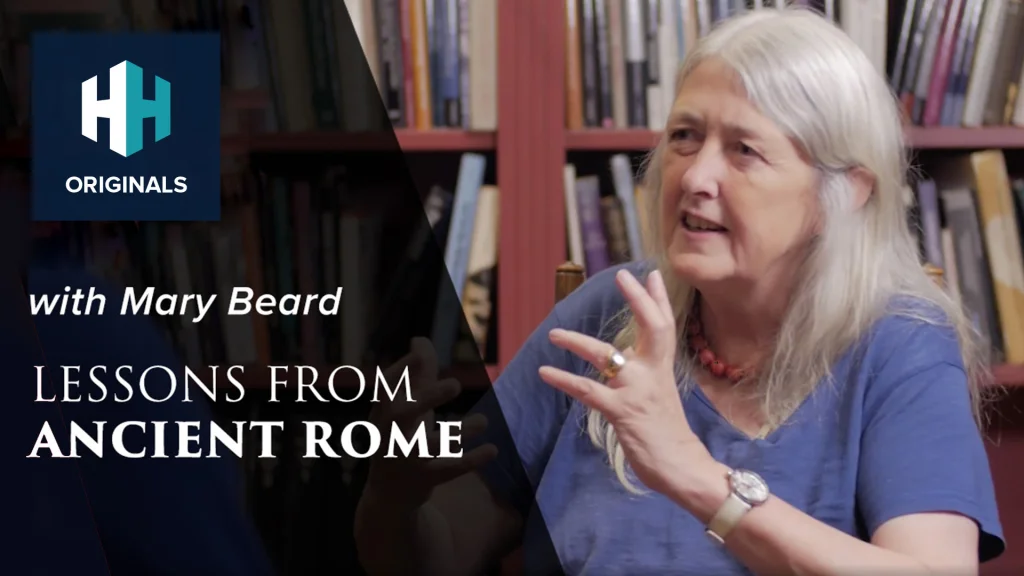This article is an edited transcript of Roman Navy in Britain: The Classis Britannica with Simon Elliott available on History Hit TV.
 Listen Now
Listen NowThe Roman emperor Septimius Severus was born into an aristocratic Punic family in 145 AD in Leptis Magna, one of the richest parts of the Roman Empire, in the heat of a blistering summer. He was one of the first in his family to become a senator but made steady progress in the cursus honorum, the sequential progression of offices for Roman senators.
The first province he oversaw as a governor was Gallia Lugdunensis, the capital of which was modern-day Lyon. Northwestern Gaul looked out towards Britain and the Classis Britannica, the Roman fleet in the area around Britain, was also in charge of controlling the continental coast. And so, it was in the late 180s that Severus, a man from North Africa, looked out at Britain for the first time.
During his time as governor of Gallia Lugdunensis, Severus became good friends with Pertinax, the British governor. But his relationship with Roman Britain turned sour when his good friend faced a legion revolt against him.
Severus’ rise to power

A bronze head of Septimius Severus. Credit: Carole Raddato / Commons
Soon after, Severus became the governor of Pannonia Superior, a crucial province on the Danube that guarded the northeastern approaches to Italy.
That was where he was in 192 on New Year’s Eve when Commodus assassinated the emperor and there ensued a scramble for power. The following year was known as the Year of the Five Emperors, during which Severus’ friend Pertinax became the emperor before falling out with the Praetorian Guard (an elite army unit whose members served as the emperor’s personal bodyguards) and being killed.
Severus was then declared the emperor by his legion in his headquarters on the Danube. He launched a blitzkrieg assault on northern Italy, made his way into Rome, staged a coup and ultimately became the winner of the Year of the Five Emperors.
He held severe contempt for the political classes in Rome; if you look at the Arch of Septimius Severus at the Forum in Rome, it was almost built on the foundations of the Curia Senate House.
Severus was effectively saying, “You remember who’s in charge. It’s me”.
Britain re-entered the picture in the year 196 when the British governor, Clodius Albinus, rebelled against Severus and took his three legions to the continent.
The two sides fought an apocalyptic battle at Lugdunum near Lyon in 197. Severus won – but only by the skin of his teeth.
The episode only reinforced Severus’ negative view of Britain and he sent military inspectors to the province at the end of the campaign to rebuild the military there in a way that ensured its loyalty to him.
You can still see the physical evidence of this in London today. The Severan land walls of London – including the still-standing section near Tower Hill tube station – were built by Severus to tell the people of the city, “You remember who’s the boss”.
They were designed to have the same impact as the Arch of Severus at the Forum.

The Arch of Septimius Severus at the Forum in Rome. Credit: Jean-Christophe BENOIST / Commons
The problem of Britain
By 207, Britain was still struggling to rebuild itself after the Albinus revolt. Severus didn’t seem to want to reinstall a full military presence there and he may have left the northern frontier with Scotland unmanned.
In the late 190s, the then governor of Britain, Lupus, was forced to buy off the Scottish tribal confederations of the Caledonians and the Maeatae to keep them quiet.
However, in 207, Severus received a letter, according to Herodian, who is admittedly something of an unreliable source, which said that Britain was in danger of being overrun – the entire province, not simply the north.
The governor of Britain at that time was Senecio, and he requested help from Severus or reinforcements. Severus delivered both.
The Caledonians and the Maeatae were first mentioned by sources in the 180s, so they had been around for 20 or 30 years at that point. The Scottish populations was growing and the tribal elites had become used to receiving vast sums of money from the Romans as a way of buying them off.
Sources tell us that the weather in the late 200s was very poor and so there may have been a problem with the harvest. With Scotland a grain population, the Caledonians and the Maeatae may have headed south to hunt for food.
 Watch Now
Watch NowBritain’s largest army
All of those factors coalesced into Severus arriving in Britain in 208 to conquer Scotland with around 50,000 men, the largest force that Britain had ever seen at that point.
There were three legions usually stationed in the Roman province, normally amounting to about 15,000 men, and there were also about 15,000 auxiliaries, as well as other ancillary troops.
So there was already a garrison in Britain of around 30,000 men. But despite that, Severus brought with him a reformed Praetorian Guard as well as his Imperial Guard Cavalry and his new Roman legion, the Legio II Parthica. The latter was one of three Parthica legions that Severus formed through his eastern campaigns.
Most legions at that time were still based near the frontiers. But Severus based the Legio II Parthica 30 kilometres from Rome. It was pure intimidation for the people of Rome, and it served the same function as his arch at the Forum and the walls of London.
He also brought all of the Parthian legions to Britain, as well as vexillationes of troops from the Rhine and the Danube. It added up to around 50,000 men. Meanwhile, 7,000 men from the Roman fleet, Classis Britannica, also played a crucial role in his campaigns to conquer Scotland.
 Listen Now
Listen NowThese units arrived in Britain via several points – the great estuary in East Anglia, Brough-on-Humber, South Shields and Wallsend. South Shields actually became one of the crucial ports in Severus’ Scottish campaigns, with its granaries increasing 10-fold in size to support them.
The primary sources suggest that Severus didn’t expect to go home.
Horace, a Roman poet who wrote in the early Principate period, around the time of Augustus, eloquently said that Augustus would not become a god unless he conquered the Parthians, the Persians and the Britons.
Well Severus had already conquered the Parthians, sacking their capital, and then chose the last three years of his life to finish off the conquest of Britannia.
He also probably initiated the separation of the province of Britannia into two. This division was fully realised under his son Caracalla, but it was under Severus that Britain was split for the first time into Britannia Inferior (Lower Britain) in the north and Britannia Superior (Upper Britain) in the south.

A bronze statue of Constantine the Great sits outside York Minster in England. The emperor looks down upon his broken sword, which forms the shape of a cross. Credit: York Minster / Commons.
The new capital
Severus deliberately chose to spend the last three years of his life in Britain and turned York into the imperial capital. We know this because the primary sources say that he didn’t just bring military forces.
He brought his wife, Julia Domna, who played a major role in influencing the policy decisions of her husband, as well as his sons, Caracalla and Geta, and his entire court.
He also brought the Imperial Fiscus Treasury and key senators, turning the Principia – the headquarters of the legionary fortress in York – into the Imperial Roman Capital.
This building is now the cathedral York Minster. If you go through York today, you will probably see the massive column that sits next to the statue of Constantine outside the Minster. This column is from the Basilica of the Principia that Severus built. It has been estimated that the Basilica would have been almost as tall as the Minster is today.















